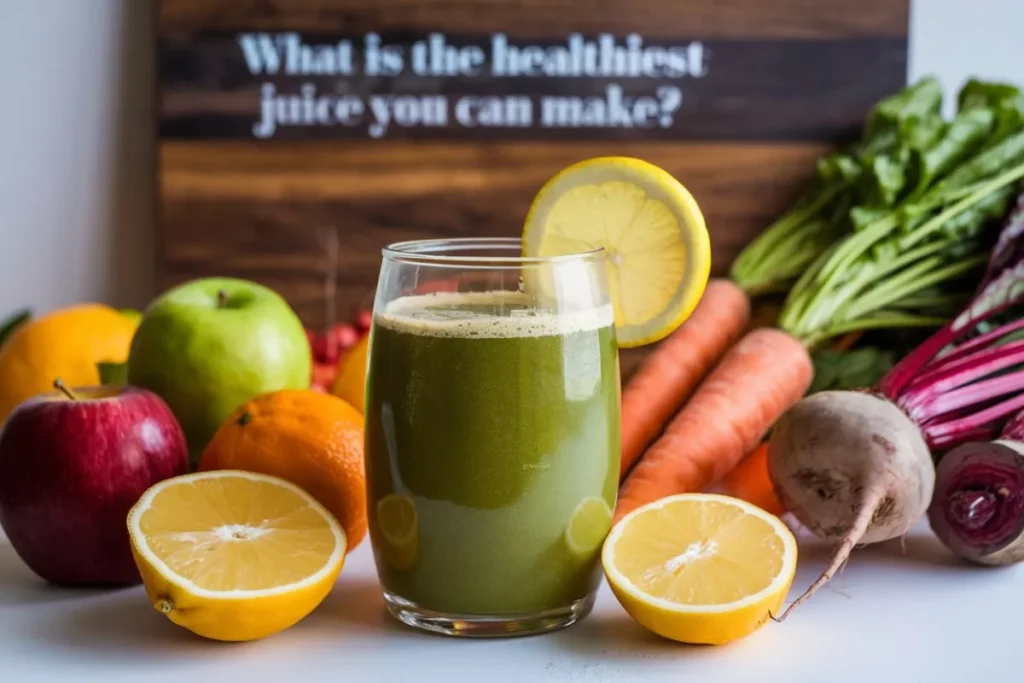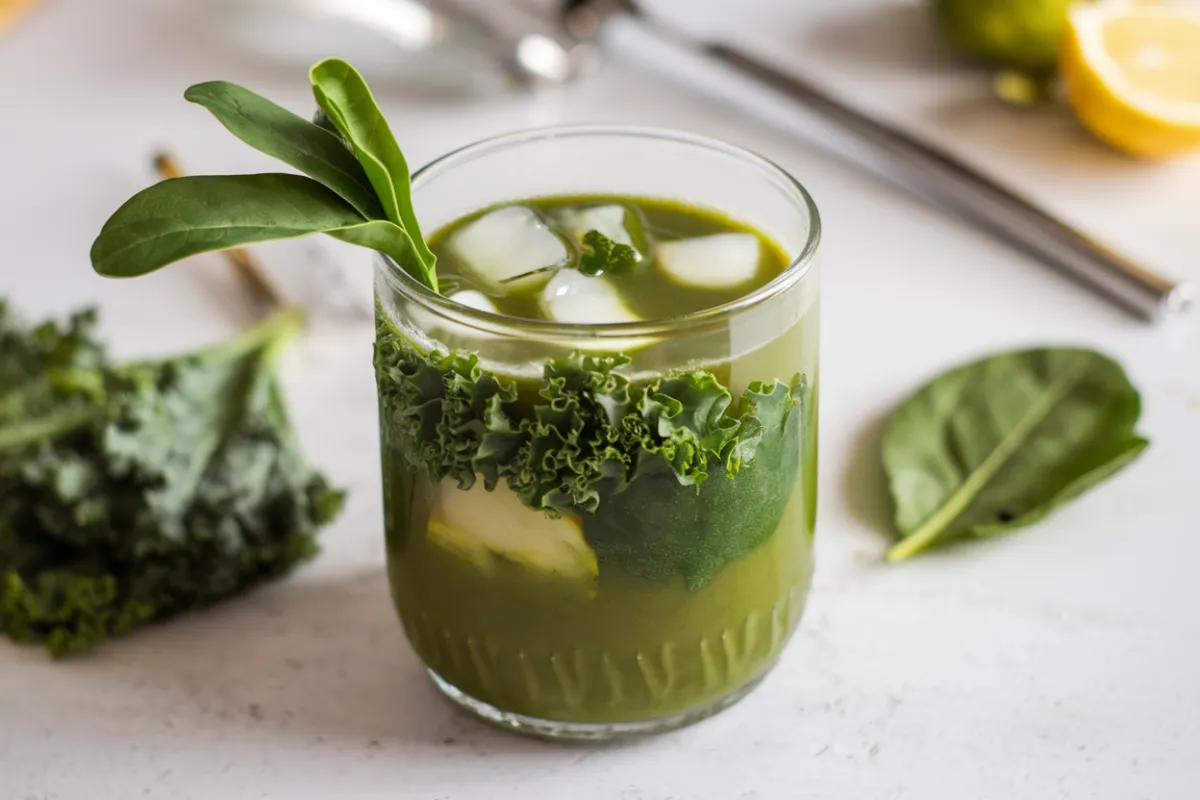Juicing is more than just a trend; it’s a powerful way to boost your health by consuming concentrated nutrients from fruits and vegetables. Whether you are a seasoned juicer or a beginner, understanding what works best for juicing is essential. In this article, we’ll cover everything you need to know—from the types of juicers and the best produce for juicing to delicious recipes and advanced tips.
Why Juicing? The Key Benefits
Juicing offers a range of health benefits that make it an appealing option for many. Here are some of the most significant benefits:
- Nutrient Absorption: Juicing makes it easier for your body to absorb vitamins and minerals from fruits and vegetables. When juice is consumed without the fiber, the digestive system has less work to do, allowing nutrients to be absorbed more quickly and efficiently.
- Detoxification: Regular juicing can help support the body’s natural detoxification processes. By incorporating ingredients like lemon, ginger, and greens, you can enhance the body’s ability to eliminate toxins.
- Weight Loss: Fresh juice is low in calories but high in nutrients, making it an excellent choice for those looking to manage their weight. Replacing high-calorie snacks or meals with a nutrient-dense juice can help reduce overall caloric intake while still providing essential nutrients.
- Improved Digestion: Many juices, especially those containing ingredients like ginger or mint, can help soothe the digestive tract and promote healthy digestion.
Choosing the right juicer is critical for maximizing these benefits. For a comprehensive overview, consider this Guide to Choosing the Right Juicer.
Types of Juicers and Their Importance
The quality of your juice largely depends on the type of juicer you use. Different juicers are suited for different types of produce and purposes. Here are the most common types:
1. Centrifugal Juicers
Centrifugal juicers are the most commonly used juicers due to their speed and convenience. They work by shredding fruits and vegetables with a fast-spinning blade and then separating the juice from the pulp using centrifugal force.
- Advantages: Quick, easy to use, and typically less expensive than other types.
- Disadvantages: Generates heat that may destroy some nutrients; less efficient at extracting juice from leafy greens.
2. Masticating Juicers
Also known as cold-press juicers, masticating juicers operate at a slower speed, using an auger to crush fruits and vegetables and extract juice.
- Advantages: Higher juice yield, retains more nutrients and enzymes, and works well with leafy greens and wheatgrass.
- Disadvantages: Slower and generally more expensive than centrifugal juicers.
3. Twin Gear Juicers
Twin gear juicers use two interlocking gears to crush and grind produce into juice. They are the most efficient and produce high-quality juice with minimal oxidation.
- Advantages: Maximum nutrient retention, high juice yield, and ideal for juicing hard produce and leafy greens.
- Disadvantages: Expensive and may require more effort to clean.
4. Manual Juicers
Manual juicers are hand-operated devices ideal for juicing small quantities or for travelers who want fresh juice on the go.
- Advantages: Inexpensive, portable, and easy to clean.
- Disadvantages: Limited to juicing citrus fruits and requires more manual effort.
If you’re concerned about the costs of juicing, read this guide on Juicing on a Budget to learn how to save money while still enjoying nutritious juices.
Best Fruits and Vegetables for Juicing
Choosing the right produce is essential for making the most out of your juicing experience. Below is a breakdown of the best fruits and vegetables for juicing:
High-Yield Fruits
- Apples: A great base for any juice, apples add a natural sweetness and are rich in antioxidants.
- Citrus Fruits: Oranges, lemons, and grapefruits are packed with Vitamin C and add a tangy flavor.
- Pineapples: High in bromelain, an enzyme that aids digestion, pineapples offer a tropical taste and enhance the juicing experience.
High-Yield Vegetables
- Cucumbers: With their high water content, cucumbers are excellent for hydration and provide a refreshing base for juices.
- Celery: Known for its diuretic properties, celery is a great addition for detoxifying juices.
- Carrots: Rich in beta-carotene, carrots add a sweet, earthy flavor and are great for improving vision and skin health.
Low-Sugar Options
- Berries: Strawberries, blueberries, and raspberries are rich in antioxidants but low in sugar, making them perfect for health-conscious juicers.
- Leafy Greens: Spinach, kale, and Swiss chard are loaded with iron, calcium, and fiber while being low in calories.
Unique Ingredients to Enhance Flavor

- Ginger: Adds a spicy kick and is known for its anti-inflammatory properties.
- Mint: Provides a refreshing flavor, perfect for summer juices.
- Lemons: Boost flavor, add Vitamin C, and enhance the body’s detox capabilities.
The Importance of Organic Produce
Whenever possible, choose organic produce to avoid pesticides and chemicals. Organic fruits and vegetables generally offer higher nutritional value and better taste.
How to Prepare Produce for Juicing
Proper preparation is crucial for making delicious and nutritious juice. Here’s how to prepare your produce:
- Cleaning and Washing: Always wash your produce thoroughly to remove dirt, bacteria, and pesticides.
- Peeling, Chopping, and Deseeding: Depending on your juicer, you may need to peel, chop, or deseed certain fruits and vegetables.
- Storage Tips: Store produce properly to maintain freshness. Keep leafy greens wrapped in a damp cloth and refrigerate fruits and vegetables that spoil quickly.
Top Juicing Recipes for Different Goals
Juicing isn’t just about throwing random ingredients into a juicer. To achieve specific health goals, certain ingredients work better than others. Here are some top juicing recipes for various needs:
Detox Juice Recipes
- Green Detox Juice: Combine kale, spinach, cucumber, lemon, and ginger for a powerful detox drink.
- Beet Cleanser: Blend beets, carrots, apple, and ginger for a juice that supports liver function and purifies the blood.
Weight Loss Juice Recipes
- Cucumber Lemon Detox: Cucumber, lemon, mint, and green apple work together to flush out toxins and reduce bloating.
- Metabolism Booster: Mix grapefruit, lemon, ginger, and cayenne pepper to enhance metabolism and promote fat burning.
Energy Boosting Juice Recipes
- Beet, Carrot, and Apple Juice: A combination of beetroot, carrot, and apple provides a rich source of nitrates, which help improve blood flow and energy levels.
- Morning Sunshine: Blend orange, carrot, and turmeric for a refreshing start to your day with an anti-inflammatory boost.
Immune-Boosting Juice Recipes
- Citrus Power: Orange, lemon, ginger, and turmeric work together to strengthen the immune system.
- Berry Blast: A mix of strawberries, blueberries, lemon, and honey is packed with antioxidants to protect against illness.
Budget-Friendly Recipes
- Apple Carrot Mix: Use apples, carrots, and a hint of ginger for a cost-effective yet nutritious juice.
- Simple Green: Combine spinach, cucumber, apple, and lemon for a refreshing and affordable drink.
Common Mistakes to Avoid When Juicing
Juicing can be highly beneficial, but only if done correctly. Here are some common mistakes to watch out for:
- Overusing High-Sugar Fruits: While fruits like oranges and grapes are delicious, they can lead to a spike in blood sugar levels if consumed in excess.
- Not Rotating Ingredients: Using the same ingredients daily can limit your nutrient intake. Aim for a variety of fruits and vegetables to ensure a wide range of nutrients.
- Ignoring Food Allergies or Sensitivities: Some ingredients may cause allergic reactions or sensitivities. Always check for any food allergies before trying new recipes.
- Skipping Proper Cleaning of Juicer: A clean juicer is essential for maintaining the quality of your juice and preventing bacteria buildup.
Maintaining the Freshness and Nutritional Value of Juices
Fresh juice is best consumed immediately, but if you need to store it, here are some tips:
- Best Practices for Storing Fresh Juice: Use an airtight container to minimize exposure to air, which can degrade nutrients. Refrigerate immediately and consume within 24-48 hours.
- Freezing Juice for Later Use: If you make a large batch, freeze the juice in ice cube trays and use it as needed. This method preserves most of the nutrients while extending the shelf life.
- Shelf Life of Fresh Juice: Juice made from fresh ingredients can last 24-48 hours in the fridge. If you add citrus or ginger, the shelf life can extend slightly due to their natural preservative properties.
Advanced Tips for Juicing Enthusiasts
Once you’ve mastered the basics, these advanced tips will help you take your juicing to the next level:
- Incorporate Superfoods: Add spirulina, wheatgrass, or chlorella to boost the nutritional value of your juice.
- Use Herbs and Spices: Experiment with herbs like basil and parsley or spices like turmeric and cinnamon to enhance both the flavor and health benefits of your juice.
- Combine Juicing with Other Dietary Practices: Pair juicing with practices like intermittent fasting or a plant-based diet for maximum health benefits.
Frequently Asked Questions (FAQs)
What is the Best Time to Drink Juice?
The best time to drink juice is in the morning on an empty stomach. This allows your body to absorb nutrients more effectively without any digestive hindrance.
Can You Juice Every Day?
Yes, you can juice every day, but balance is crucial. Juicing should complement your diet, not replace whole foods. Incorporating a variety of fruits and vegetables is key to maintaining overall health.
Are There Side Effects of Juicing?
While juicing is generally safe, some people may experience digestive discomfort, especially if they are not accustomed to consuming large amounts of raw fruits and vegetables. Start with small amounts and gradually increase as your body adjusts.
How Can I Make Juice Without a Juicer?
If you don’t have a juicer, you can use a blender. Blend your ingredients with a little water, then strain the mixture using a cheesecloth or fine mesh strainer to separate the juice from the pulp.
What is the Shelf Life of Fresh Juice?
Fresh juice is best consumed immediately to retain its nutrients. However, if stored properly in an airtight container in the refrigerator, it can last for 24-48 hours.
Conclusion
Juicing is a versatile and enjoyable way to boost your nutrient intake, whether you’re looking to detox, lose weight, or simply enjoy a delicious drink. By selecting the right juicer, using fresh, organic produce, and experimenting with different recipes, you can unlock the full potential of juicing. Start your juicing journey today and discover the incredible benefits of incorporating fresh juice into your daily routine!

